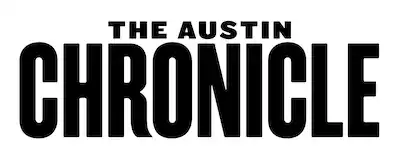https://www.austinchronicle.com/news/2014-06-20/prof-dumpster-fighting-for-the-one-percent/
Prof. Dumpster: Fighting for the 1%
By Nora Ankrum, June 20, 2014, News
Is it possible to live both sustainably and happily? This is a question best pondered, it seems, from the inside of a Dumpster – which is why Jeff Wilson, a dean and associate professor of biological sciences at Huston-Tillotson University, decided to move into one this past February. It seemed the perfect testing ground for the theory that "less is more." Wilson intends to stay there one year, during which time – assuming all goes well with a $100,000 Kickstarter campaign ending July 1 – he and students will transform the Dumpster into a "sustainable house and interactive teaching lab" that uses only "1% of the water, energy, and space of the average American home." As Wilson likes to say, "It's the new one percent."
According to the current design proposal on Kickstarter, the Dumpster's final stage of transformation ("Phase 3: Space Capsule Über Dumpster") will feature a "pop-up" second story, sleeping loft, "folding balcony," composting toilet, solar shower, and rooftop rain collection system. For portability, it will tuck back together into its original form like George Jetson's briefcase. The whole experiment will be accessible "in real time" thanks to "dumpster cams and a data feed with current dumpster conditions."
Current Dumpster conditions for now are more modest and mosquito-ridden – though, as Wilson notes, "What's nice about a 33-square-foot house is you can just net the whole thing." While he's become adept at leaping through the Dumpster's side window, he provides guests with a repurposed swimming-pool ladder. Inside, all appears clean, thanks to a vigorous run through a "car wash on steroids" at the Texas Disposal Systems' facility. Nonetheless, says Wilson, "My girlfriend swears she can still smell a hint of barbecue. Maybe we got lucky and got a Dumpster from behind Franklin's Barbecue." Art by Wilson's 6-year-old daughter adorns the walls, solar-powered gadgets charge his iPhone and track indoor temperature, and raised floor panels hide clothes stored underneath. At night, he sleeps on a Kazakh mat. Being an inch taller than the Dumpster is wide, he lies diagonally across the six-by-six-foot space (along the hypotenuse, in professor language). In the mornings, he makes Turkish coffee and tends his garden with water lugged by foot from Lady Bird Lake.
There is also a considerable element of theatre. Notably, Wilson does these things while donning the role of his bespectacled, bow tie-clad alter ego, "Professor Dumpster." With an affinity for pithy bons mots and puns (his email signature is "at your disposal"), Wilson has infused the project with a winking irreverence. His move-in during February's long cold spell drew news coverage from as far away as the UK, which suggests that the Dumpster is precisely the "conversation box" it's intended to be. The Professor also appeals to students. In the spring, Blackshear Elementary School fifth graders joined in to test soil, filter water, and build garden beds. At year's end, Professor Dumpster spoke at the students' graduation. This kind of hands-on learning is particularly meaningful, says Blackshear Principal Betty Jenkins, and it builds much-needed college awareness.
Amanda Masino, an HT assistant professor of biology, helps develop "experiential, design-based, and inquiry-based" curricula around the project, using "the same challenge but modifying it based on grade level," she says. A Dumpster 101 class brings HT students into the project, which is generating lessons beyond simply tracking energy and water use. Students will be analyzing DNA swabbed from the Dumpster's interior, for example, and sampling Wilson's blood to track his stress levels. There are also policy issues to be explored, such as the limits building codes impose on design.
The project has significance for students beyond the classroom. Last fall, they thought it was "strange" when Wilson proposed living in a Dumpster, says sophomore Angelica Erazo, but they rallied around the sustainability idea. "We decided to come up with an organization to help push that issue, as well as create environmental awareness in the Eastside community," she says. Erazo co-founded Green Is the New Black, a student group promoting a campuswide initiative to reduce water and energy use. The organization recently won $10,000 from Home Depot in the Retool Your School challenge. The group is also focused on bringing minorities into the environmental conversations of which, Erazo notes, they've often been left out. Because affordability is a major part of that conversation for low-income communities, she hopes to clear up the misconception that being environmentally friendly has to be expensive. "You can save money being green," she says, pointing to simple behaviors like turning off the lights.
The Dumpster Project is not one of those money-saving endeavors – at least not yet. While the point right now is to bring the brightest designers and best technological expertise to the experiment, says Wilson, affordability is central to the ultimate goal of developing a sustainable model of living. "This may be a $100,000 Dumpster home," says Wilson, "but the next project might be the tiniest house built to code, and the next could be a tiny home for under $20,000."
Copyright © 2025 Austin Chronicle Corporation. All rights reserved.
